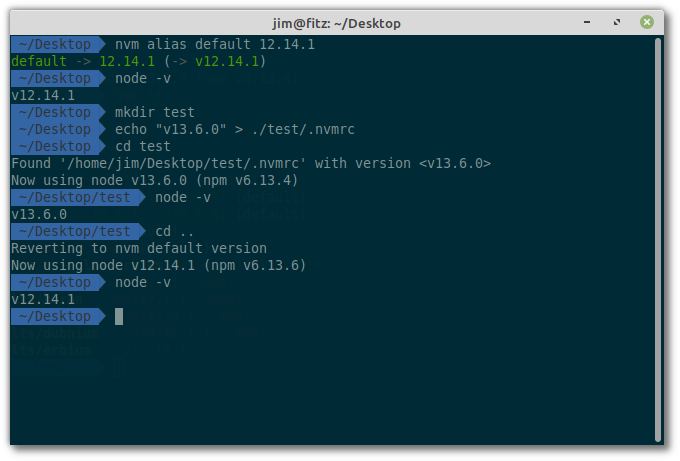


Once we've completed the tutorial, you'll be ready to take the next step with Node.js.
#NVM INSTALL NODE LTS HOW TO#
In this quick tutorial, we'll take a look at how to install nvm, and then how to start using it as your version manager for Node.js. This means you can have the latest version of Node.js, the latest versions of all the LTS release lines, and any number of other versions you want to use or test as well. One awesome aspect of nvm is that it manages the versions of Node.js, it doesn't just upgrade them. That said, there's a fantastic tool for the community called nvm that allows you to manage the versions of Node.js that you've got installed locally. Many of them typically come with a speedy way to upgrade when a new version is available.īy default, there's not a way to upgrade the version of Node.js you've got from within Node.js itself. I really appreciate the existence of nvm and all the people behind it, and hope you like the idea.As with any programming language, platform, or tool, the first step to using it is getting it installed.

Nevertheless I'm just a new user to nvm, knowing much less about it than you guys.
#NVM INSTALL NODE LTS UPDATE#
So the break-other-tab problem is almost the same as before, again, it probably can be cured a little bit with proper change detection and certain reactions.Īnd regarding updating nvm itself, Homebrew might be similar that it also uses local git repositories, but nicely wrapped in the brew update command, so the user doesn't have to work with the git repository directly, maybe that's something nvm can also think about?
#NVM INSTALL NODE LTS MANUAL#
Nevertheless, the proposal is only to make it easier to do something that's already doable, something used to require a couple of manual steps but now just one command could do. Regarding breaking other tabs, maybe we can keep the old versions around for sometime, so that other tab sessions could continue to work? Or there can be a version change detection mechanism, so that nvm compare the version it has loaded to the version on disk and reload if there's a change?



 0 kommentar(er)
0 kommentar(er)
